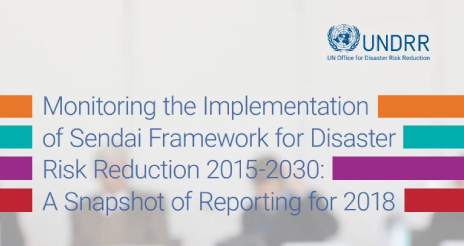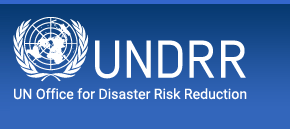- Our Mandate
- Mission and Objectives
- UNDRR in the UN
- Work Programme & Annual Reports
- Results Based System
- Work Partnerships
- Headquarters - Geneva
- SG-UN representatives for DRR
- Regional Office – The Americas and the Caribbean
- Head of the Regional Office – The Americas and the Caribbean
- What is Disaster Risk Reduction?
- What is the International Strategy?
- History of UNDRR
Sendai Framework disaster loss data released to mark 5th anniversary

By UNDRR
GENEVA, 18 March 2020 – A UN effort to improve reporting on disaster losses by UN member States has been made public today to mark the 5th anniversary of the adoption of the Sendai Framework for Disaster Risk Reduction at a UN World Conference in Sendai, Japan, on March 18, 2015.
The Sendai Framework is the most comprehensive plan ever adopted by UN Member States to reduce disaster losses. It applies to both man-made and natural hazards including related technological, environmental and biological hazards such as the COVID-19 pandemic.
The Sendai Framework Monitor was put in place two years ago to allow countries to report systematically on their disaster losses including mortality, numbers of people affected, economic losses and damage to critical infrastructure.
In 2018, 82 countries with a total population of four billion – including 16 least developed and 17 land-locked developing countries – reported 22,000 people dead and 1,900 missing as a result of disasters caused by man-made or natural hazards.
For the same year, 72 countries with a combined population of 3.7 billion, reported that 741,000 people were rendered ill or injured, over 80% in Africa. Some 7.8 million (Asia and the Pacific, 69%) had their homes damaged or destroyed, and close to 25 million (Asia and the Pacific, 74%) had their livelihoods damaged or destroyed.
A sample of 63 countries reporting on their direct economic losses for 2018 recorded losses of $13 billion in agriculture out of a total of $17.5 billion in direct economic losses.
These countries included 28 least developed or land-locked developing countries and small island developing States, which reported that agriculture suffered the heaviest losses, followed by damage to critical infrastructure and housing. While these losses did not match Europe in terms of absolute economic value, they were significant as a percentage of GDP and undermined efforts to achieve the Sustainable Development Goals (SDGs) including eradication of poverty.
These details are taken from the online report Monitoring the Implementation of Sendai Framework for Disaster Risk Reduction 2015-2030: A Snapshot of Reporting for 2018, released today by the UN Office for Disaster Risk Reduction to mark the 5th anniversary of the Sendai Framework's adoption.
The Sendai Framework has four targets focused on: reducing global disaster mortality, reducing the number of disaster-affected, reducing economic losses and damage to critical infrastructure, all to be achieved by 2030.
It also seeks an increased number of national and local strategies for disaster risk reduction by the end of 2020, enhanced international cooperation to developing countries and greater public access to multi-hazard early warning systems and disaster risk information.
To date 104 countries have started reporting on at least one of the seven Sendai Framework targets in 2018.
Mami Mizutori, the Secretary-General's Special Representative for Disaster Risk Reduction, said today: "We are still a long way from providing the comprehensive overview of disaster losses needed to guide investment and action on disaster and climate risk but this is a good first snapshot of where we are. The COVID-19 pandemic underlines why it is important to report on disaster losses as the data collected helps to improve both the response and preparedness for future events.
"These numbers set a benchmark for reporting countries as we embark on a decade of action to achieve the SDGs and substantially reduce disaster losses. That means reducing the impact that disasters are having on efforts to eradicate poverty and hunger, provide education and health for all, and to bring down the numbers of people being displaced by disasters.
"It is encouraging to see so many low- and middle-income countries starting to report on their economic losses as this has been an area of significant under-recording in the past when the focus usually has been on major devastating events with large loss of life while overlooking frequently occurring small-scale floods and storms which have a significant cumulative effect.
"The challenge of reducing disaster risk has been ratchetted up by the climate emergency. The last five years have been the hottest on record and extreme weather events now account for about 90% of known economic losses. A better understanding of where these losses are occurring will be essential to guide effective action on climate and disaster risk.
"I am encouraged by the fact that 80 countries have reported having a national disaster risk reduction strategy in place and, in many cases, aligned with the Sendai Framework targets. Many are also reporting that these strategies are being implemented in a way that is coherent with other global frameworks including the Sustainable Development Goals and the Paris Agreement."
Related links
Follow the UNDRR news online :
 Now we have twitter account @UNDRR Américas y el Caribe
Now we have twitter account @UNDRR Américas y el Caribe
JOIN US!
Tweets por el @UNDRR Américas y el Caribe
